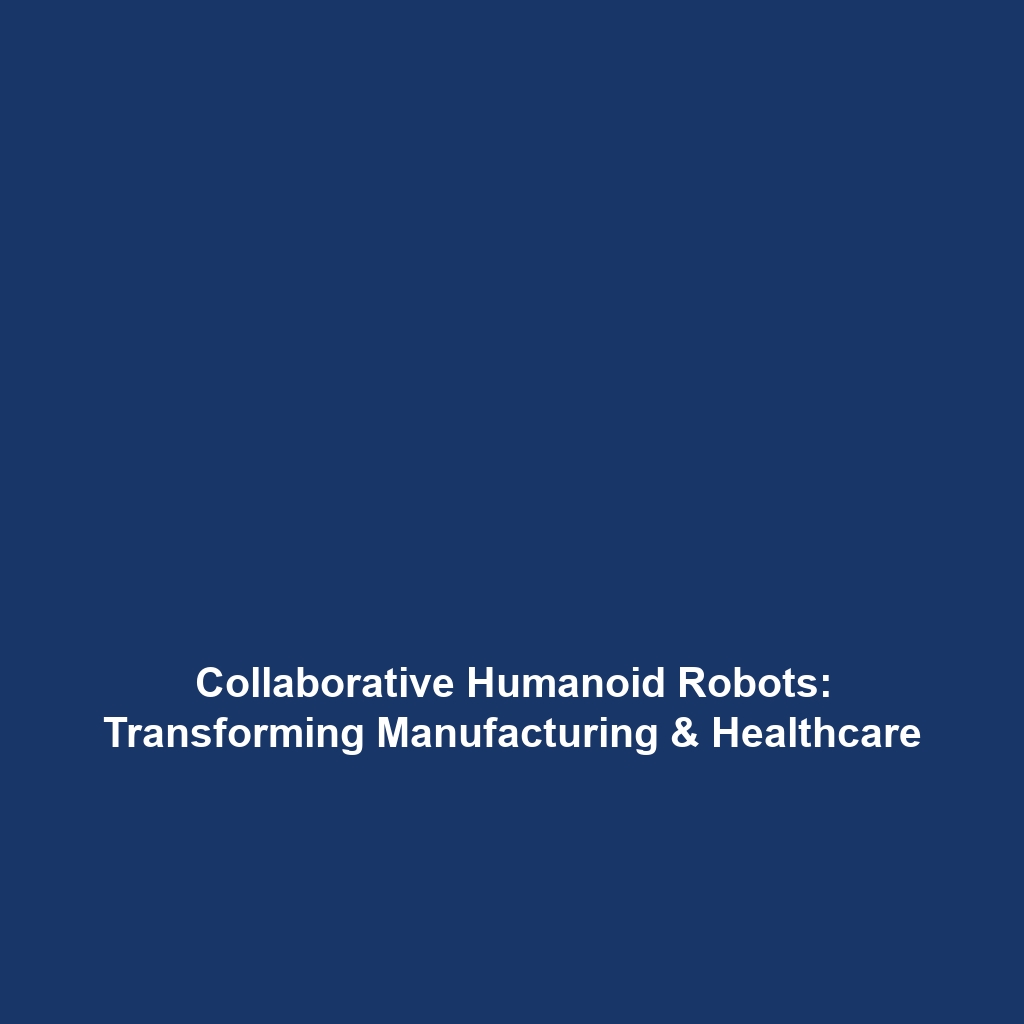How Humanoid Robots Can Work Alongside Humans in Manufacturing, Healthcare, and Other Sectors
Introduction
As the integration of humanoid robots into various industries progresses, understanding their collaborative potential with human workers is vital. These advanced machines can enhance productivity and efficiency while reducing operational costs. This article delves into how humanoid robots work alongside humans in manufacturing, healthcare, and beyond, emphasizing their significance within the broader context of technological advancements in humanoid robotics.
Key Concepts
Understanding Humanoid Robots
Humanoid robots are designed to mimic human behavior, exhibiting both physical and cognitive capabilities. Below are some major concepts related to their implementation:
- Collaboration: Humanoid robots are engineered to assist human workers, performing tasks that require precision and strength.
- Adaptability: These robots can learn from their environments and improve their functions over time.
- User Interface: Effective communication between humans and robots is facilitated through intuitive interfaces.
Applications and Real-World Uses
Humanoid robots have found practical applications across various sectors:
- Manufacturing: Collaborative robots, or cobots, assist workers in assembly lines by handling heavy items and repetitive tasks, enhancing efficiency.
- Healthcare: From patient care to robotic surgery, humanoid robots can support medical professionals by monitoring vital signs and assisting with rehabilitation.
- Customer Service: In retail and hospitality, humanoid robots serve as receptionists or information providers, improving customer interactions.
Current Challenges
Despite the advancements, there are challenges and limitations in the application of humanoid robots:
- Technical Complexities: The development of reliable AI that enables humanoid robots to understand and interact with dynamic environments.
- Cost Implications: High initial investment costs can deter organizations from adopting humanoid robots.
- Job Displacement Concerns: Fear of job losses among human workers may hinder the acceptance of robots in the workplace.
Future Research and Innovations
Future research will focus on enhancing the capabilities of humanoid robots, including:
- Advanced AI Algorithms: To improve learning and adaptability, enabling robots to understand nuanced human interactions.
- Integration with IoT: Connecting humanoid robots with smart devices for more efficient workflow management.
- Enhanced Mobility: Innovations in robotics that allow better navigation within diverse environments.
Conclusion
In summary, humanoid robots are positioned to transform the way we work alongside machines in manufacturing, healthcare, and other sectors. Their ability to collaborate effectively with human workers emphasizes the ongoing advancements in humanoid robotics. As we look to the future, continued research and innovation will play a crucial role in overcoming existing challenges, enhancing their capabilities and acceptance. For further reading on advancements in humanoid robotics, visit our sections on Manufacturing Technologies and Robotics in Healthcare.

